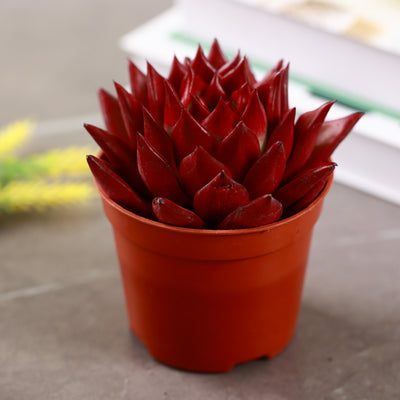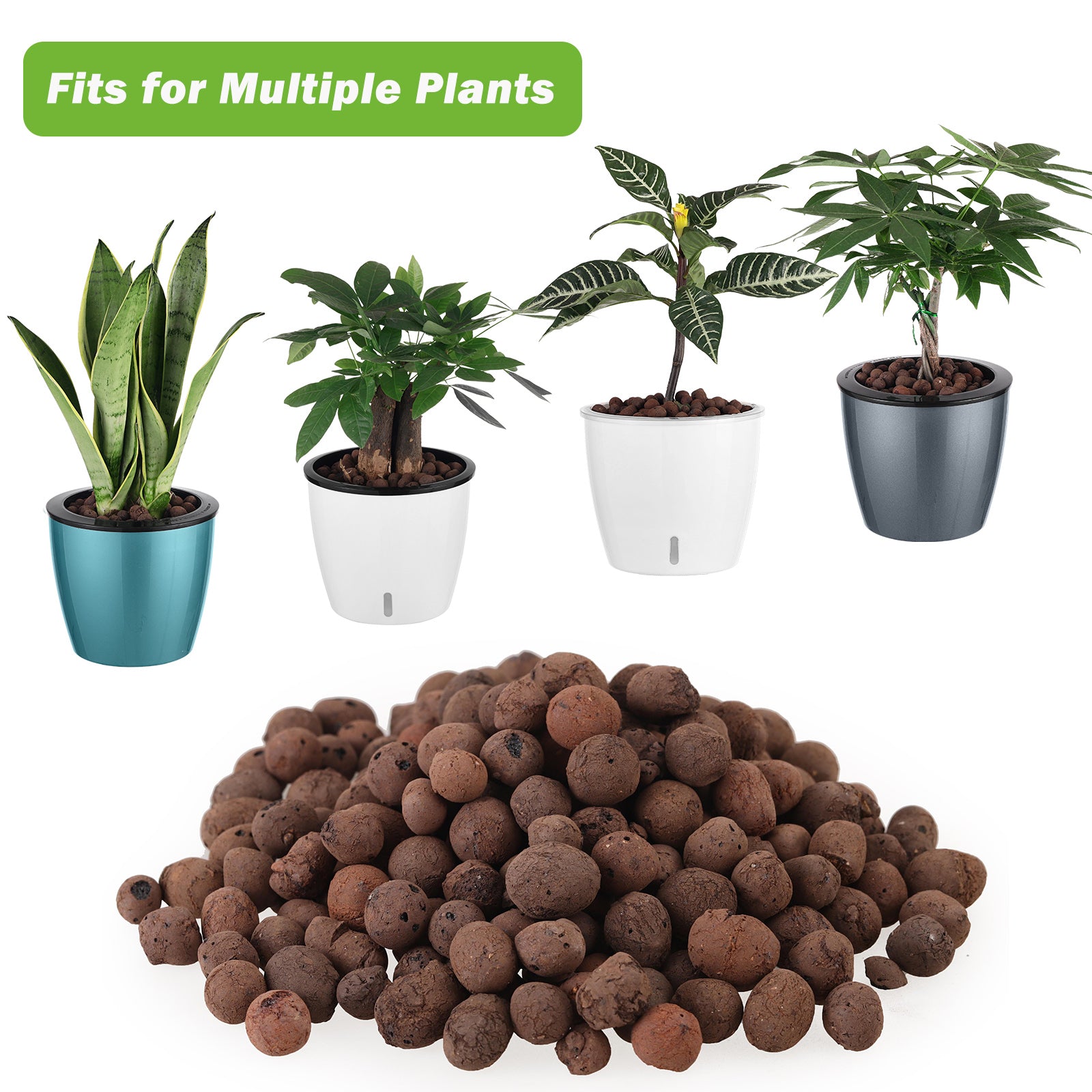How To Make Your Homemade Fertilizer for Indoor Plants
Fertilizer is often thought of as something that is only needed for outdoor plants. However, indoor plants can also benefit from fertilization. Indoor plants are typically grown in pots, which can restrict their access to nutrients.
Therefore it’s important to give them an extra boost with fertilizer. There are many different types of fertilizer that you can buy from a garden center or nursery.
However, it’s also easy to make your own fertilizer at home. Fertilizer is one of the most important things you can give your plants to ensure they are healthy and thrive.
Homemade fertilizer is not only cheaper, but it’s also often more effective than commercial fertilizer. Homemade fertilizer is easy to make and a great way to recycle some of the household waste that would otherwise end up in the trash. Plus, it is much gentler on your plants than chemical fertilizers.
Using homemade fertilizer with self-watering planters will help to avoid overfertilizing your plants. Self-watering planters tend to keep the soil moister, so you don't need to fertilize as often.
This article will show you how to make homemade fertilizer for indoor plants. We will also share some tips on how to use & benefit from it.
What Plants Need Fertilizer and Why?
Fertilizer is an essential part of gardening and landscape maintenance. Plants need fertilizer to give them the nutrients they need to grow and thrive. Without fertilizer, plants can become stressed, unhealthy, and even die. Here is the guide about plant food vs plant fertilizer if you are confuse between these.

So, what plants need fertilizer and why?
Most plants need fertilizer to give them the necessary nutrients for healthy growth. Fertilizers are a combination of nitrogen, phosphorus, and potassium. These three elements are essential for plant growth and development.
Nitrogen helps plants produce strong stems and leaves, phosphorus helps with root development and flowering, and potassium helps with fruit and seed production.

Nitrogen is especially important for plants as it helps them create proteins and other building blocks that are necessary for healthy leaves, stems, and flowers.
Without enough nitrogen, plants will struggle to perform photosynthesis properly, resulting in unhealthy and weak leaves. In addition to the three main elements, most fertilizers contain trace elements such as zinc, iron, manganese, and boron.
These trace elements are also essential for healthy plant growth, as they help uptake other essential elements. When and how often you fertilize also depends on the type of plant you’re growing.
Annual plants, such as vegetables, flowers, and herbs, should be fertilized every few weeks during their active growing season. Organic fertilizers are a great option for maintaining a healthy and sustainable garden.
Organic fertilizers are derived from natural sources and often contain a mix of beneficial microorganisms, which help to break down organic matter into readily available nutrients for plants.
No matter what type of plants you’re growing, fertilizer is essential for healthy growth and development. The type and amount of fertilizer you use should be tailored to the specific needs of your plants.
Read About other Plant Problems
African Violet leaves drooping
Why Make Your Homemade Fertilizer?
Making your fertilizer at home is an eco-friendly and cost-effective way to nurture your plants. With the right ingredients and a little effort, you can create an organic fertilizer tailored to your individual garden's needs.
Making fertilizer is also a great way to use kitchen scraps like coffee grounds, eggshells & so many other things like Worm tea, banana peels, etc.

These items are rich in nutrients and can be composted for use in homemade fertilizer. These ingredients contain essential nutrients like nitrogen, phosphorus, and potassium, which plants need to survive and thrive.
A wide range of natural fertilizers is used in organic farming. In addition to kelp, cow manure, horses, chickens, limestone, worm castings, goats, and cattle are also suitable sources.
It is an excellent source of nitrogen and other essential nutrients in manure. Making your fertilizer is easier than you think. All you need is a few basic ingredients, a few tools, and a bit of patience. If you want to ensure your plants get all the nutrients they need, consider making homemade fertilizer.
How to Make Your Fertilizer
Houseplants are a great addition to any home, adding a natural touch of beauty, life, and even air quality to the atmosphere. But like any living thing, houseplants must be properly cared for to stay healthy and thrive.

One of the most important aspects of houseplant care is providing them with the proper nutrients. While several commercial plant fertilizers are available, a variety of natural alternatives can also be used to help nourish your houseplants.
- Fish Emulsion: Fish emulsion is a liquid fertilizer from fish waste rich in nitrogen and other beneficial nutrients. It’s best applied to diluted soil and should be used every two weeks.
There are a lot of nutrients in aquarium water, like nitrogen and potassium. Aquarium water is important for your plants, so make sure to save it when you clean your fish tank.
- Molasses: Molasses is a natural indoor plant fertilizer source of nitrogen and other essential nutrients, making it a great choice for fertilizing gardens and lawns. Molasses also has a secret superpower: it can be used to create homemade fertilizers.
Minerals such as copper, magnesium, iron, manganese, calcium, manganese oxide, and potassium are abundant in molasses, a rich source of carbon for plants. Molasses also provides food for beneficial soil microbes.
Using molasses as a homemade fertilizer is incredibly easy and cost-effective. The mixture of molasses and other natural fertilizers can benefit the soil. Examples include Epsom salts and alfalfa meal. Mix the two and spread the mixture around your plants. The nitrogen and other nutrients in the molasses will help your plants to grow strong and healthy.
- Banana Peels: They are a great source of potassium and are rich in phosphorus and magnesium. It can be used as a fertilizer for houseplants. Bury the peels in the soil around the base of your plants, and the nutrients will eventually make their way into the soil. You can also mix the peels with soil before planting or make a liquid fertilizer for your plants by blending them with water.
- Coffee Grounds: Coffee grounds are filled with nitrogen, potassium, and other essential nutrients, making them a great natural fertilizer for indoor plants.
Sprinkle some coffee grounds around the base of your plants, and they will slowly release their nutrients into the soil.
It would be best if you used coffee grounds on acid-loving plants like African violets, jade plants, Christmas cactus, and ferns to make the soil more acidic.
- Eggshells: Eggshells are filled with calcium, which is essential for healthy plant growth. You can save eggshells as fertilizer for houseplants by freezing them until you have a whole carton.
Simply crush the shells with a rolling pin inside their freezer bag or use a coffee grinder to make shell powder.
When you pot your plant or enhance the soil surface of an existing plant, you can mix some eggshells right into the soil. It is then possible for the soil to absorb the nutrients that they release.
- Epsom Salt: Epsom salt is a great source of magnesium and sulfur, which are both essential for healthy plant growth. Mix a tablespoon of Epsom salt into a gallon of water and use it to water your plants.
- Grass Clippings: Grass clippings are a great source of nitrogen and other essential nutrients. Spread a layer of grass clippings around the base of your plants and lightly cover them with soil. The nutrients will slowly make their way into the soil.
- Green tea: Green tea is packed with beneficial elements, including a variety of amino acids, minerals, vitamins, and antioxidants. These elements can help increase soil quality, promote root growth and encourage plant growth.
In green tea leaves, tannic acid is present, which helps lower the soil's pH, which is beneficial for growing plants. When used as a fertilizer, green tea can help to reduce soil compaction and make it more nutrient-rich, creating an ideal environment for plants to thrive.
Approximately every four weeks, you can feed your plants one green tea bag per two gallons of water to help them grow strong and healthy. Before giving your plants water, let them cool first.
- Cooking Water: There are many benefits of using cooking water to water your plants and many reasons why you should do it. The benefits of this are numerous, including the fact that it is a free source of nutrients.
Additionally, it promotes nutrient storage and moisture retention in the soil, which would otherwise be poured down the drain.
It is important for plants to have many essential micronutrients in their water, which are released when foods like pasta, vegetables, or eggs are boiled.
Calcium, phosphorus, and nitrogen are included in this category; Plants love these nutrients.
Allow the water to cool down after cooking, and use it to water your houseplants.
- Wood Ash: Wood ash is high in potassium and other essential nutrients. It is easy to increase the alkalinity of your potting soil by adding ashes from burnt wood.
If your potting soil has a pH higher than 6.5, wood ash could be harmful to the plants. Mix a small amount into the soil around your plants, and the nutrients will slowly make their way into the soil.
Using these natural fertilizers can help keep your houseplants healthy and thriving. So don’t be afraid to try out some of these natural fertilizer options to give your houseplants the nutrients they need to stay healthy and happy.
Conclusion
Making your own homemade fertilizer for houseplants is easy and cost-effective. Firstly, collect organic materials such as kitchen scraps, grass clippings, and coffee grounds.
Ensure you are using the right materials. Take care not to overfeed them and cause a nutrient burn.
With the right materials and careful application, you can create an effective, cost-effective fertilizer for your indoor plants. This simple DIY method can give your indoor plants a great nutrient boost while saving time and money.
FAQs
What is the Best Homemade Fertilizer for Indoor Plants?
The best homemade fertilizer for indoor plants is a combination of organic materials, such as compost, manure, and kitchen scraps. Kitchen scraps like banana peels and coffee grounds are great sources of nitrogen and potassium, which are both important for healthy plant growth.
How Do You Fertilize Houseplants Naturally?
You can fertilize houseplants naturally by using banana peels, coffee grounds, eggshells, or compost.
What Household Items Can Fertilize Plants?
There are many household items that can be used to fertilize plants, including kitchen scraps, coffee grounds, Eggshells, Coffee Grounds, and even banana peels.
Read More About Plants
What is Leca Balls And Why is it Useful For Plants?
Can You Use Outdoor Soil for Indoor Plants?
Why is My Snake Plant Turning Yellow?
How to Water Your Plants While You're on Vacation?
Best Soils For Growing Healthy Monsters
How Often to Water Spider Plant
*Disclosure: This post may contain affiliate links. As an Amazon Associate I earn from qualifying purchases.
















Leave a comment